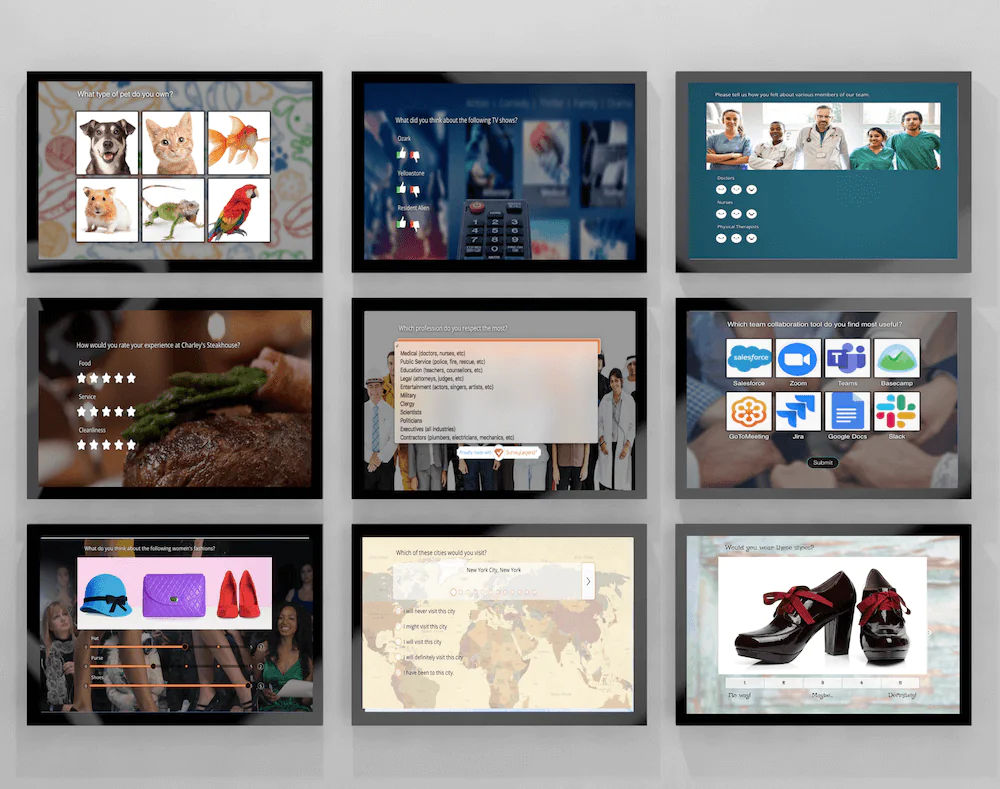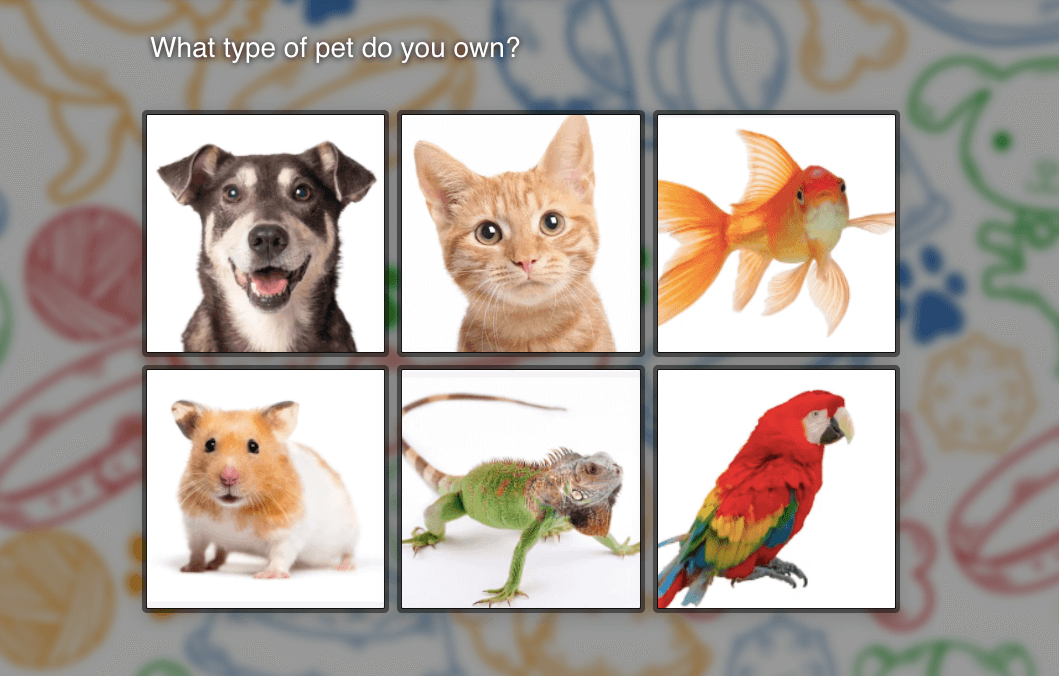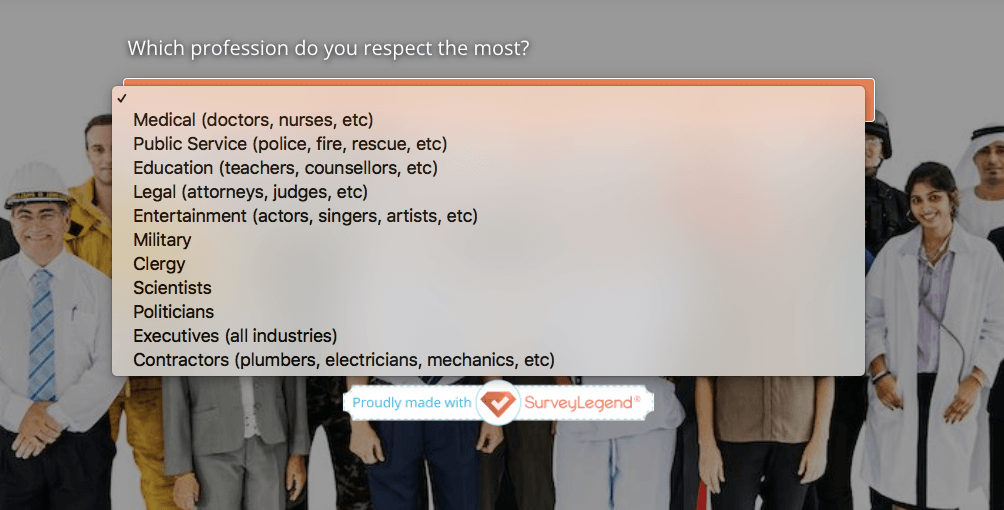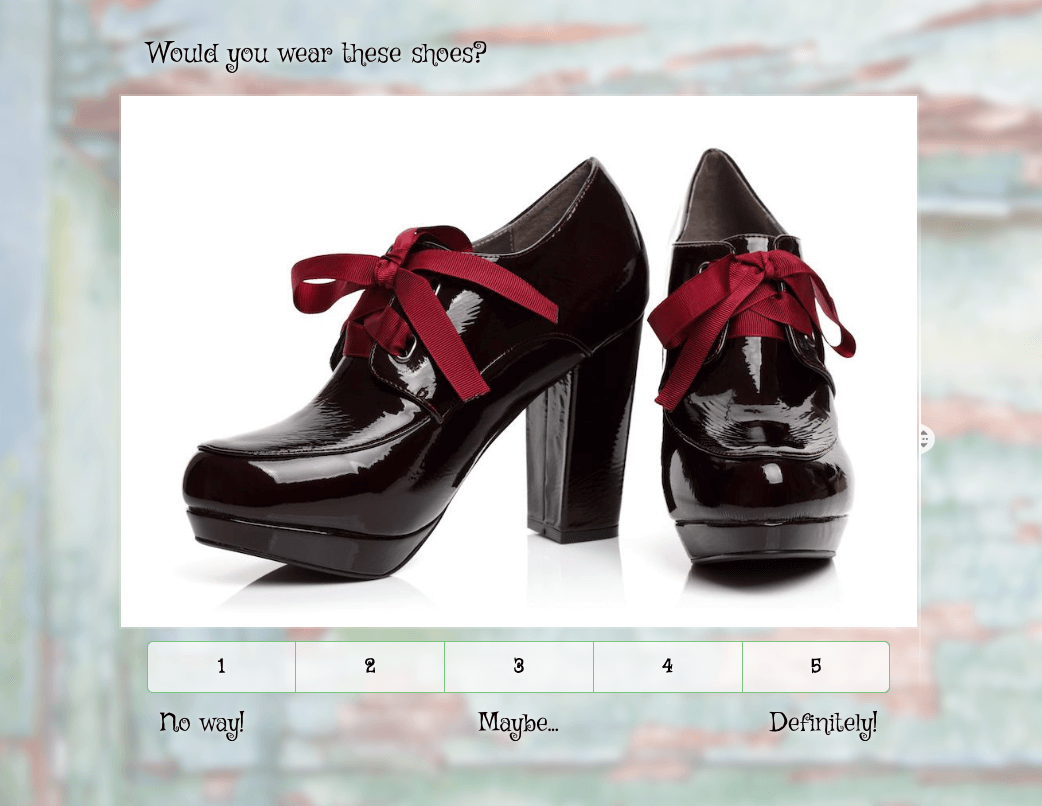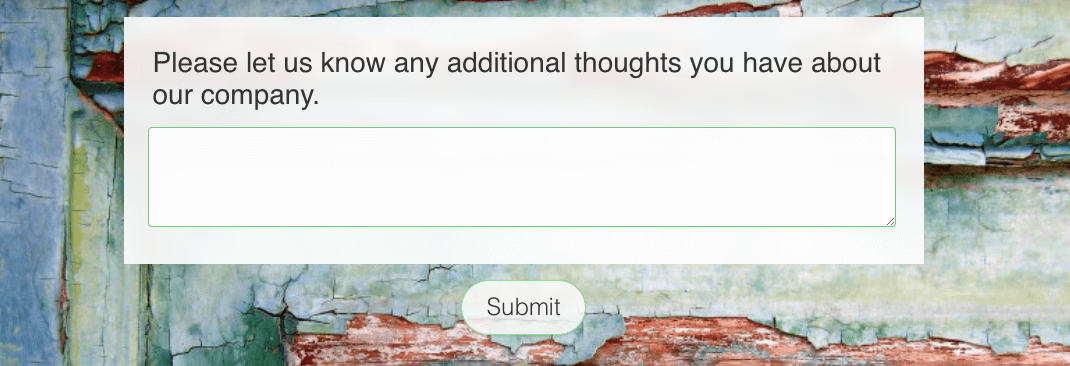When it comes to survey questions, you have a whole host of options available to you. Today, types of survey questions go far beyond the traditional yes/no and multiple-choice variety (although they’re still great options). So, let’s look at some sample survey questions that you may want to consider – and why – for your next online survey, poll, or questionnaire.
Create your award survey, form, or poll now!
12 Different Types of Survey Questions and When to Use Them
Survey methodology – the study of survey methods and the sources of error in surveys – reveals that respondents crave variety in the types of questions they answer. Including a variety of types of questions on your surveys can make them more engaging to participants, increasing response rates. Variety also reduces “survey burnout,” in which participants drop out at some point during the survey because they grow bored with it. Here are twelve types of survey questions and when to use them, along with survey question examples using SurveyLegend.
1. Multiple Choice Questions
We don’t need to explain what these are; they’re just like those quizzes you took in school and have been taking ever since! There are some special things to know about SurveyLegend’s multiple choice questions, however. With our online surveys, participants are able to choose more than one selection if applicable. If you want to limit their choice to one selection only, simply select the “Single Selection” survey field. You can note in the instructions to participants whether they can select as many answers as they want, or if they are limited to one selection.
Learn more about SurveyLegend’s multiple choice questions.
2. Multiple Choice Questions with Images
Depending on the online survey platform you’re using, you can use text-only questions, or use picture questions to further engage respondents. SurveyLegend allows you to do both, and you can set your image questions so that respondents can select more than one answer or limit them to one answer. So why use images? There are many benefits to picture surveys. They are known to increase response rates because they are more visually engaging, can trigger memory and emotion, communicate ideas more effectively, cross language barriers, and more.
Learn more about the 7 Benefits of Picture Surveys.
3. Thumb Ratings
Popularized by movie critics Siskel & Ebert, thumbs up is simply a more engaging way to get answers to a like/dislike question. Plus, in this day of social media, most people are very used to voting up or down with thumbs making these types of survey questions very common. Another example would be streaming services. Netflix, for example, allows you to vote thumbs up or down after watching a show in order to make better viewing recommendations based on your ratings.
Learn more about SurveyLegend’s thumb ratings.
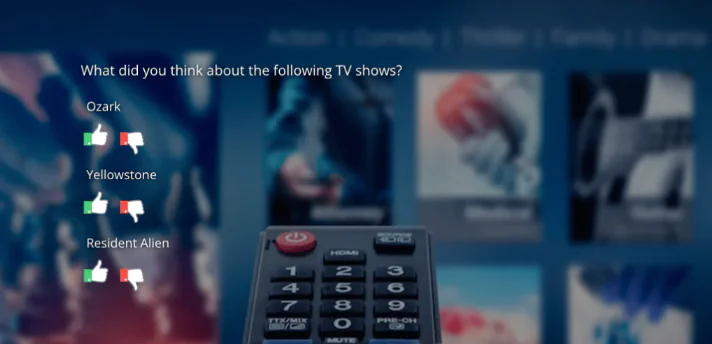
4. Star Ratings
The Zagat Survey, commonly referred to as Zagat, really popularized the star rating system in 1979 by collecting and correlating the ratings of restaurants by diners. Today, of course, star ratings are very common, especially with Google Reviews and G2 (where, coincidentally, SurveyLegend scores a 4.5!). Star ratings are popular because survey takers can easily them up and calculate the average value. With SurveyLegend, you can set your number of stars from three to ten.
Learn more about SurveyLegend’s star ratings.
5. Emoji Rankings
Just about everyone uses emojis these days thanks to social media (in fact, using an emoji in a Tweet can increase engagement by 25% compared to messages without emoji). So why not use them in surveys? What are the benefits to emojis? Well, while numbers are universally understood and don’t need translation, does “5” on a seven-point scale properly capture how a respondent feels? On the other hand, facial expressions or emojis convey a sentiment, and human facial expressions are, for the most part, universally understood. Here, emojis are used in a healthcare survey, which is great for current patients who are too ill to express how they feel with words.
Read more about SurveyLegend’s Emoji Rankings, or “Smiles.”
6. Slider Ratings
Sliders are unique to online surveys (after all, you can’t interact with a piece of paper!). So, use online platforms to their full ability and add sliders, which allow participants to slide their approval (or disapproval) across a visual line. The interactivity makes it highly engaging, as you can see on this fashion survey. Rather than just check a box, respondents interact with your survey, which can improve response rates.
Learn more about SurveyLegend’s Slider Ratings.
NOTE: The slider survey below is live, so go ahead and try it out using the sliders!
7. Drop Down List
Dropdown lists are often used when there are a lot of potential answers in order to keep the survey looking clean and manageable. However, they word the same as a single selection, organized in a list versus being all visible at the same time. Take, for example, a question that asks “What Country Are Your From?” Showing all potential answers in a single selection question would be a nightmare. With the dropdown, respondent can even type in the first few letter of their country name and they will be navigated to choices that start with that letter. Shown here is a screen capture of a drop-down survey after a participant has clicked to show options.
Learn more about SurveyLegend’s Drop Down Lists.
8. Opinion Scale
An opinion scale is commonly known as the Likert scale, named after American social scientist Rensis Likert. It is considered one of the best survey tools for researching popular opinions, which is why they’re often used for customer satisfaction surveys or marketing research surveys. On a Likert scale, a person selects one option among several that reflects how much they agree with a statement. The scale generally consists of five or seven balanced responses that people can choose from, with a neutral midpoint. The example below has fun with it, with a scale that goes from “No way!” to “Definitely!”
Learn more about SurveyLegend’s Opinion Scales.
9. Matrix Questions
Matrix questions are basically “bundled questions.” Survey makers often use them because they’re easy to write and can make a survey seem shorter than it actually is. This is important because studies show that response rates improve the shorter a survey appears. Typical matrix questions are presented on a grid, with one question being used for several answers. At SurveyLegend, we do thing a little differently and more efficiently! Rather than present a grid, SurveyLegend matrix questions present participants with one main question with multiple options listed in a scrolling horizontal bar; the answers for each option remain the same.
Learn more about SurveyLegend Matrix Questions.
NOTE: It’s easier to understand how our Matrix Survey works by seeing it in action. The example below is live, give it a try!
10. NPS Questions
A Net Promoter Score (NPS) is a customer loyalty score. It ranges from -100 to 100, and is calculated by asking customers how likely they would be to recommend your product or service to a friend or colleague, on a scale of one to ten. It’s important to know that on NPS questions, based on their answers respondents are either considered
- Promoters (score of 9 and 10), your most enthusiastic and satisfied customers who may actively promote your company.
- Passives (score of 7 and 8), customers who don’t feel strongly one way or another.
- Detractors (score of 0 to 6), customers who won’t recommend your company and may talk poorly about it.
The resulting data helps companies improve their products or services to increase their score, thus building customer loyalty and creating enthusiastic brand advocates. They can try to turn passives into promoters, or try to solve issues for detractors so that they don’t actively badmouth their brand.
Read more about SurveyLegend NPS Questions.
11. Open-Ended Questions
While entire surveys composed of open-ended questions are sure to frustrate participants and become an analysis nightmare, when used sparingly they can offer deeper insight into questions you’ve already asked in another format. They’re also a good way to conclude a survey, giving participants space to type any additional information, thoughts, or concerns they may have.
Read more about How to Use Open-Ended Questions on Surveys.
12. Picture Ranking
Last but not least, picture ranking asks respondents to rank items. These types of survey questions allow respondents vote on pictures, highlighting their most preferred and least preferred options.
Learn more about SurveyLegend’s Picture Rankings.
NOTE: Want to try our our Picture Ranking Survey? It’s live, give it a go below!
How Many Types of Survey Questions Should You Use on a Survey?
As you can see, SurveyLegend offer many types of survey questions that you can use to create your survey. You can also use every type of survey question on your survey. But just because you can, should you? You may want to conduct some A/B testing to see what gets you the most responses. In our experience, it’s important to use a few different types of questions to keep respondents on their toes. By engaging with different types of questions, they can’t get in the habit of simply checking the same box all through the survey. However, you also don’t want to overwhelm them with too many types of survey questions. This is likely to frustrate and confuse them. It’s best to choose a happy medium!
Conclusion
Online surveys have come a long way, and SurveyLegend is leading the way in innovation! Today, with researchers, marketers, and others using online surveys to understand and engage with people, it’s important to keep things fresh. By using a variety of types of questions for your surveys, you can capture people’s attention – and better results! To make any of these surveys – or all of them! – count on SurveyLegend for beautiful picture polls and surveys with images. Start today for free!
What types of questions do you use for surveys? Do you incorporate picture questions into your surveys? Let us know which survey methodology works best for you!
Create your award survey, form, or poll now!
Frequently Asked Questions (FAQs)
For online surveys, researchers and marketers have their choice of questions, including multiple-choice, multiple-choice surveys with images, ranking surveys (thumbs, stars, emojis, sliders), Likert-scale questions, open-ended questions, NPS questions, picture rankers, and more.
Good survey questions mix things up in order to keep things interesting for the respondent (but don’t use too many in each survey, or it can become confusing). By using a variety of types of questions, you can engage respondents and keep them on their toes (so that they don’t fall into a pattern of always selecting C on a multiple-choice survey, for example).
Picture questions help trigger participants’ memory and emotional response, leading to higher levels of engagement and more accurate results.
